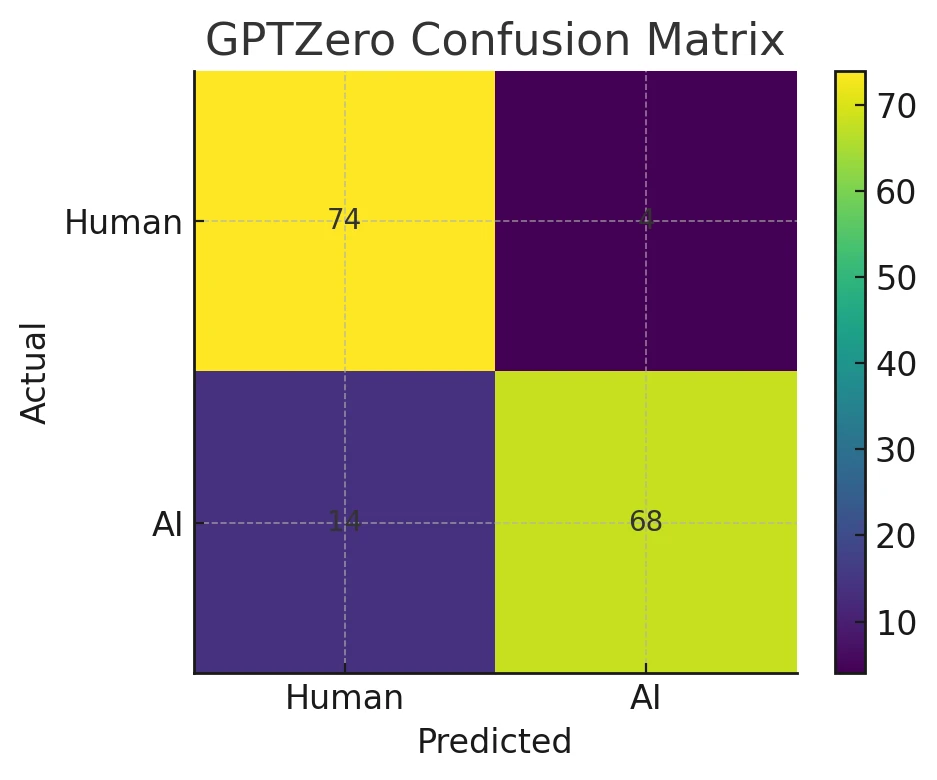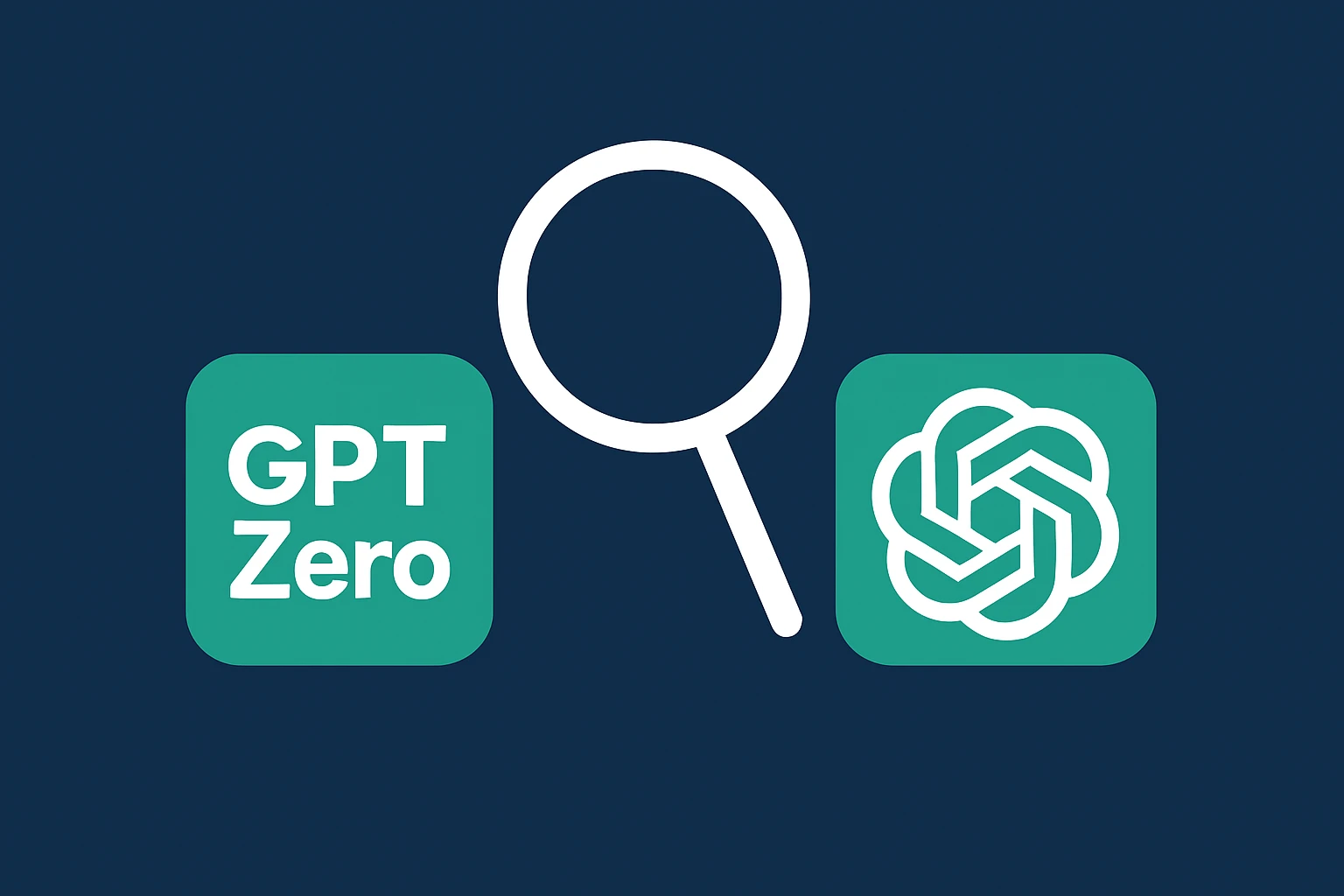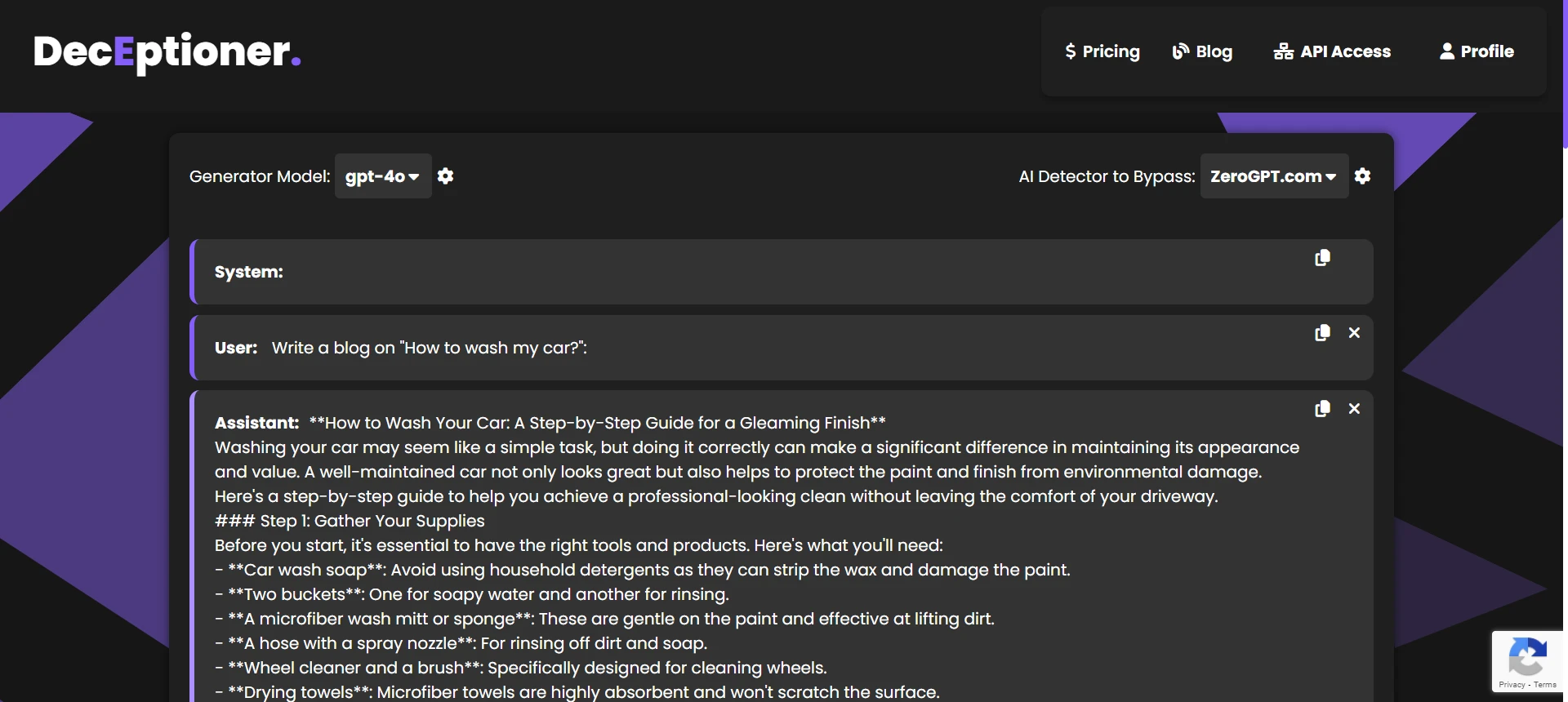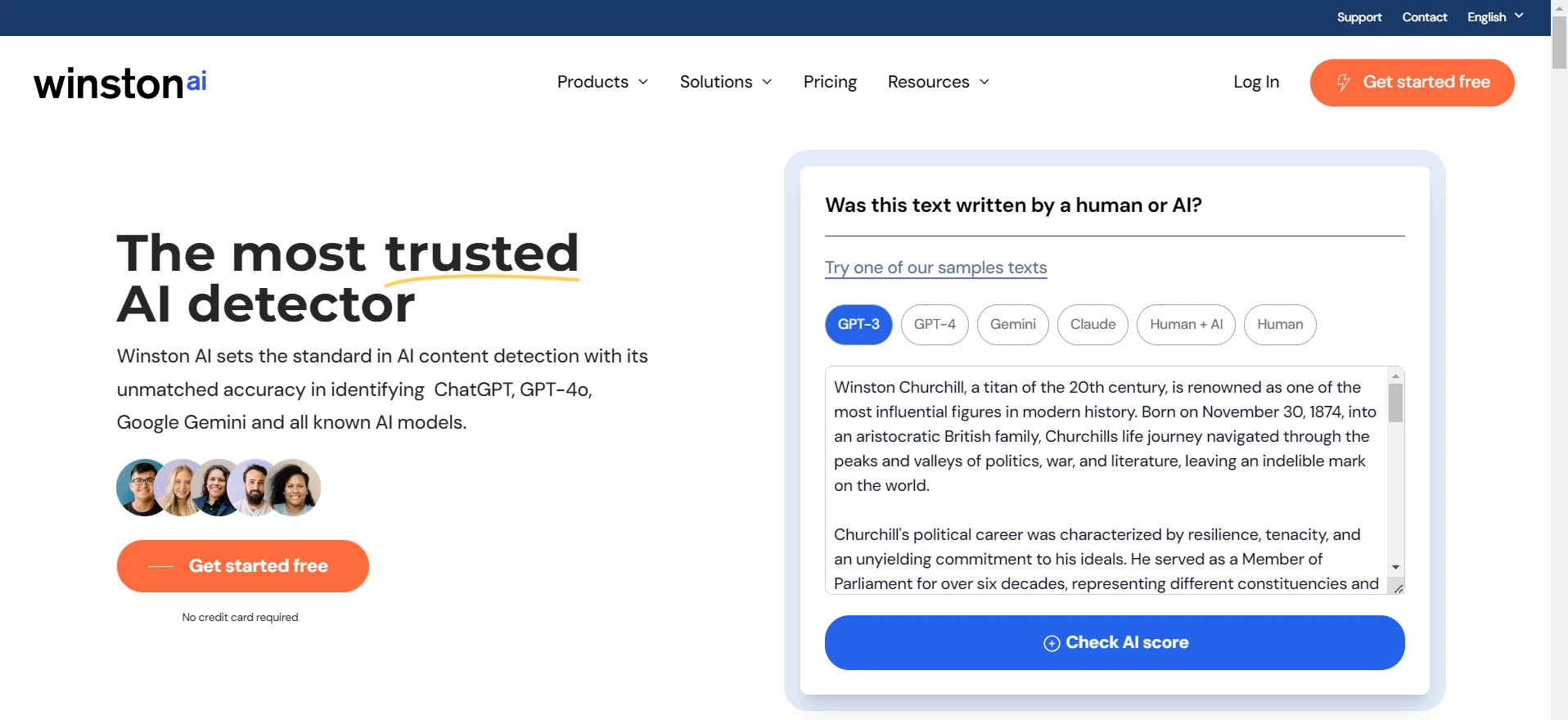As we all know it GPTZero.me is quite popular nowadays for detecting AI content. However, is it able to detect ChatGPT? The short answer is YES. The longer answer is the devil lies in the details. Keep reading to know more about it.
Why ChatGPT gets detected by GPTZero?
The simple answer is just like other AI writing tools, ChatGPT is not made to bypass GPTZero. You can see this on OpenAI’s website as well. There’s no mention of bypassing AI detectors like GPTZero anywhere on their site. Hence, if it is not made to accomplish this task it won’t be able to do it consistently.
ChatGPT is an excellent text-generation tool and it is not at all meant to bypass AI detectors. So, if you are trying to pass GPTZero’s AI detection with ChatGPT’s default text, you won’t always succeed.
Also Read: Does GPTZero detect Claude AI?
What the numbers say?

We tested GPTZero.me on 160 text pieces. Out of these, 78 texts were actual human-written and 82 texts were generated by ChatGPT. Here’s the highlight:
- Overall accuracy: 88.8% (142 / 160 correct classifications).
- Humans are rarely flagged as AI: only 5.1% of human pieces were mis-labelled (4 of 78).
- But AI is sometimes mistaken for human: 17.1% of ChatGPT pieces slipped through as “human” (14 of 82).
Why does this happen? GPTZero is trained on a variety of data sources, and its detection capabilities are tilted more towards calling something “human.” So, there is a higher chance that AI texts gets classified as “human.”
Below is the confusion matrix that shows how it classified the texts:
| Predicted | ||
|---|---|---|
| Actual | Human | AI |
| Human | 74 (TP-Human) | 4 (FN-Human) |
| AI | 14 (FP-Human) | 68 (TP-AI) |
Key Metrics
The table below shows the numerical scores for multiple important metrics.
- Accuracy is the total correct classifications.
- Precision (detect Human) measures how many texts predicted as human are actually human.
- Recall (detect Human) shows how many truly human texts it successfully identified as human.
- The same logic applies to Precision (detect AI) and Recall (detect AI). F1 is simply a harmonic mean of Precision & Recall for both categories.
| Metric | Score |
|---|---|
| Accuracy | 88.75% |
| Precision (Human) | 84.09% |
| Recall (Human) | 94.87% |
| F1 (Human) | 89.16% |
| Precision (AI) | 94.44% |
| Recall (AI) | 82.93% |
| F1 (AI) | 88.31% |
Also Read: Does GPTZero detect Perplexity AI?
Why is it easy (and sometimes hard) for GPTZero to detect ChatGPT?
GPTZero uses advanced algorithms like stylometric analysis, machine learning, and textual coherence checks to see if the text might be AI-generated. ChatGPT, on the other hand, tends to produce text with certain consistent patterns which might trigger GPTZero. However, sometimes random variations or short sentences can fool GPTZero into thinking it is human text—and that’s why we see that 17.1% of ChatGPT outputs are classified as “human.”
Below is a small descriptive table on what GPTZero might employ to detect AI content:
| Component | Description |
|---|---|
| Stylometric Analysis | Examines your writing style (like vocabulary usage, syntax, etc.) for patterns indicative of AI. |
| Machine Learning Training | Models trained on large sets of AI-generated and human-written text to detect subtle differences. |
| Text Coherence Checks | Focuses on the logical flow of ideas; AI texts sometimes are too perfect or uniform. |
| Statistical Profile | Analyzes perplexity, burstiness, and other stats to see if they match typical human writing. |
Reliability verdict
GPTZero’s accuracy is good at around 89%, but it is not fool-proof. It has a bias toward labeling texts as “human,” which explains why 14 of the 82 ChatGPT pieces were labeled as human. This means that if you are heavily dependent on GPTZero’s verdict for high-stakes scenarios—like academic integrity or legal matters—you should be cautious.
An ~11% chance of mis-classification is still significant. Hence, it’s safe for low-risk filtering, but you might want to combine it with other methods or do a manual review if the consequences are severe.
Frequently Asked Questions
Q1. Is GPTZero’s detection of ChatGPT always correct?
No, it is not 100 % accurate. The overall accuracy is about 88.8%. This means there will be some false positives and some false negatives.
Q2. Why does GPTZero rarely mis-label humans but sometimes fails to detect AI?
The data shows only 5.1% of actual human texts were mis-labeled, but 17.1% of ChatGPT texts slipped as “human.” This indicates GPTZero is biased towards calling text human rather than AI.
Q3. Are the metrics complicated to understand?
Not really. Precision simply means out of all the pieces labeled human (or AI), how many really are human (or AI). Recall means out of all the genuine ones, how many did it catch correctly. The F1 Score is a combination of these two. In GPTZero’s case, we see a strong performance for both human and AI detection, but not 100%.
Q4. Should I rely exclusively on GPTZero for important decisions?
You can use it as a first pass. But whenever the stakes are high, do a double-check either manually or with multiple AI detectors to reduce the risk of mis-classification.
The Bottom Line
GPTZero is pretty good for identifying ChatGPT text with nearly 89% accuracy, but remember, the devil is in the details. If you want guaranteed results, it simply won’t be possible with just one tool. Combine GPTZero with your own manual checks or other detectors for the best outcome.


![[G0] Can GPTZero Humanize AI Text?](/static/images/can-gptzero-humanize-ai-textpng.webp)
![[HOT TAKE] Why is ZeroGPT so bad?](/static/images/why-is-zerogpt-so-badpng.webp)
![[DIRECT] Best Affordable AI Humanizers (That Still Work in 2025)](/static/images/best-affordable-ai-humanizerspng.webp)
![[HOT] Can You Compare ZeroGPT With Other Top Tools?](/static/images/can-you-compare-zerogpt-with-other-top-toolspng.webp)





